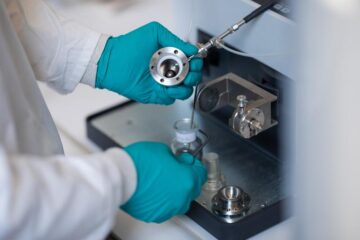Stratospheric balloon launched from Antarctica’s McMurdo base

Aboard Cream, an experiment for the study of cosmic rays
A stratospheric balloon of Nasa was launched yesterday, December 16 at 1.28 a.m. Italian time from the Antarctica’s McMurdo base. The balloon raised Cream (Cosmic Ray Energetics And Mass) experiment up to 40 kilometres of height. In the experiment, coordinated by Eun Suk Seo of Maryland University, participate American universities (Maryland, Chicago, Penn State, Ohio), South Korea universities (Ewa, KyungPook) and an Italian group of Pisa, Siena, and Torino departments of the Italian Institute for Nuclear Physics (Infn), directed by Pier Simone Marrocchesi.
The balloon, following circulation of winds high quote, will sail around the ice continent for about three weeks. During this time, data of great scientific interest will be gathered. These data concern flows of charged particles of highest energy (cosmic rays) coming from Space.
Cream experiment was conceived in particular to investigate the origin of cosmic rays and their acceleration mechanisms: two questions that are still waiting for a definite answer, in spite of the enormous advancements carried out in this field since 1912. At that time Victor Hess, thanks to his pioneer balloon flights, was the first to show the existence of radiation coming from Space.
Deepening and photos relating the balloon launch are available at the web page http://www.unisi.it/fisica/cream/
Media Contact
All latest news from the category: Physics and Astronomy
This area deals with the fundamental laws and building blocks of nature and how they interact, the properties and the behavior of matter, and research into space and time and their structures.
innovations-report provides in-depth reports and articles on subjects such as astrophysics, laser technologies, nuclear, quantum, particle and solid-state physics, nanotechnologies, planetary research and findings (Mars, Venus) and developments related to the Hubble Telescope.
Newest articles

Security vulnerability in browser interface
… allows computer access via graphics card. Researchers at Graz University of Technology were successful with three different side-channel attacks on graphics cards via the WebGPU browser interface. The attacks…

A closer look at mechanochemistry
Ferdi Schüth and his team at the Max Planck Institut für Kohlenforschung in Mülheim/Germany have been studying the phenomena of mechanochemistry for several years. But what actually happens at the…

Severe Vulnerabilities Discovered in Software to Protect Internet Routing
A research team from the National Research Center for Applied Cybersecurity ATHENE led by Prof. Dr. Haya Schulmann has uncovered 18 vulnerabilities in crucial software components of Resource Public Key…





















